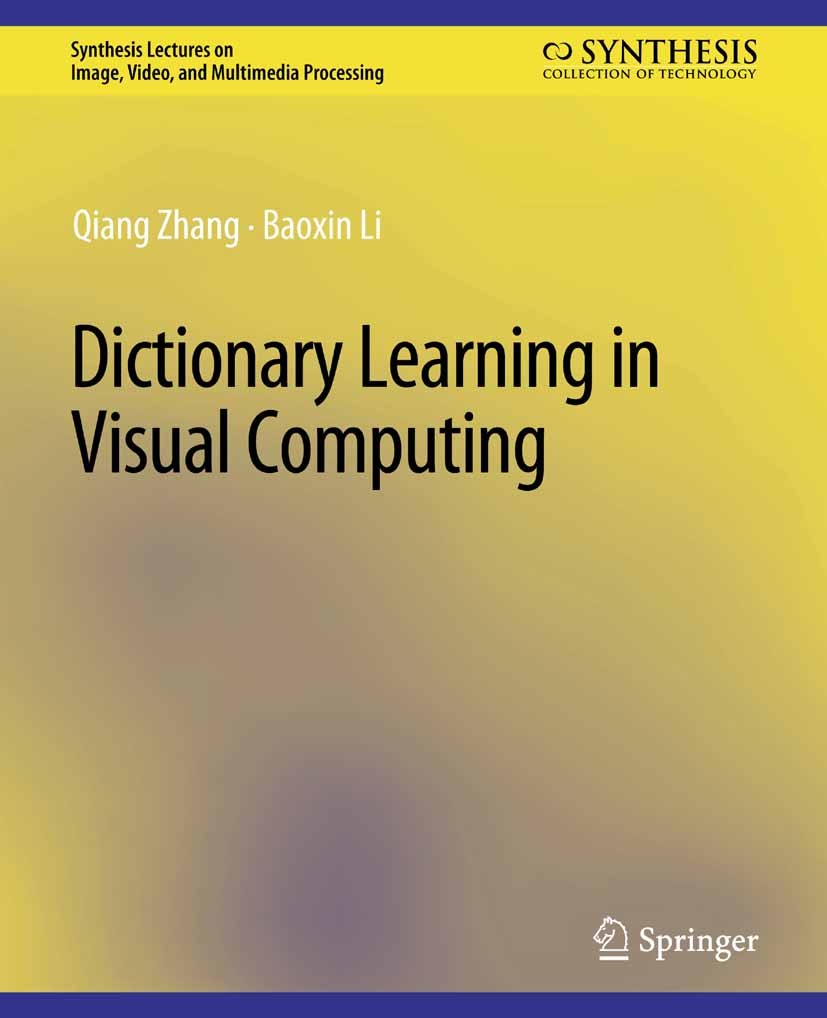| 书目名称 | Dictionary Learning in Visual Computing | | 编辑 | Qiang Zhang,Baoxin Li | | 视频video | http://file.papertrans.cn/272/271026/271026.mp4 | | 丛书名称 | Synthesis Lectures on Image, Video, and Multimedia Processing | | 图书封面 |  | | 描述 | The last few years have witnessed fast development on dictionary learning approaches for a set of visual computing tasks, largely due to their utilization in developing new techniques based on sparse representation. Compared with conventional techniques employing manually defined dictionaries, such as Fourier Transform and Wavelet Transform, dictionary learning aims at obtaining a dictionary adaptively from the data so as to support optimal sparse representation of the data. In contrast to conventional clustering algorithms like K-means, where a data point is associated with only one cluster center, in a dictionary-based representation, a data point can be associated with a small set of dictionary atoms. Thus, dictionary learning provides a more flexible representation of data and may have the potential to capture more relevant features from the original feature space of the data. One of the early algorithms for dictionary learning is K-SVD. In recent years, many variations/extensionsof K-SVD and other new algorithms have been proposed, with some aiming at adding discriminative capability to the dictionary, and some attempting to model the relationship of multiple dictionaries. One | | 出版日期 | Book 2015 | | 版次 | 1 | | doi | https://doi.org/10.1007/978-3-031-02253-1 | | isbn_softcover | 978-3-031-01125-2 | | isbn_ebook | 978-3-031-02253-1Series ISSN 1559-8136 Series E-ISSN 1559-8144 | | issn_series | 1559-8136 | | copyright | Springer Nature Switzerland AG 2015 |
The information of publication is updating

|
|
 |Archiver|手机版|小黑屋|
派博传思国际
( 京公网安备110108008328)
GMT+8, 2025-11-15 05:22
|Archiver|手机版|小黑屋|
派博传思国际
( 京公网安备110108008328)
GMT+8, 2025-11-15 05:22


